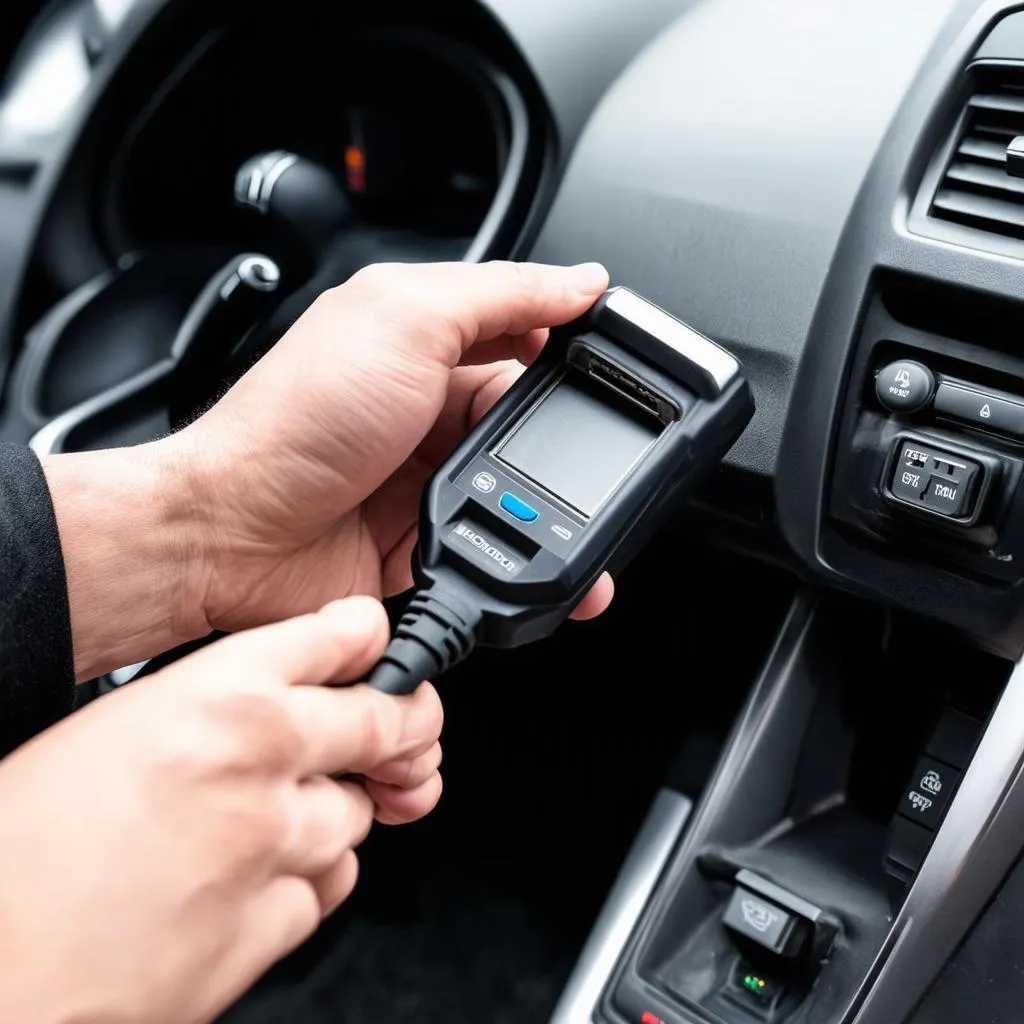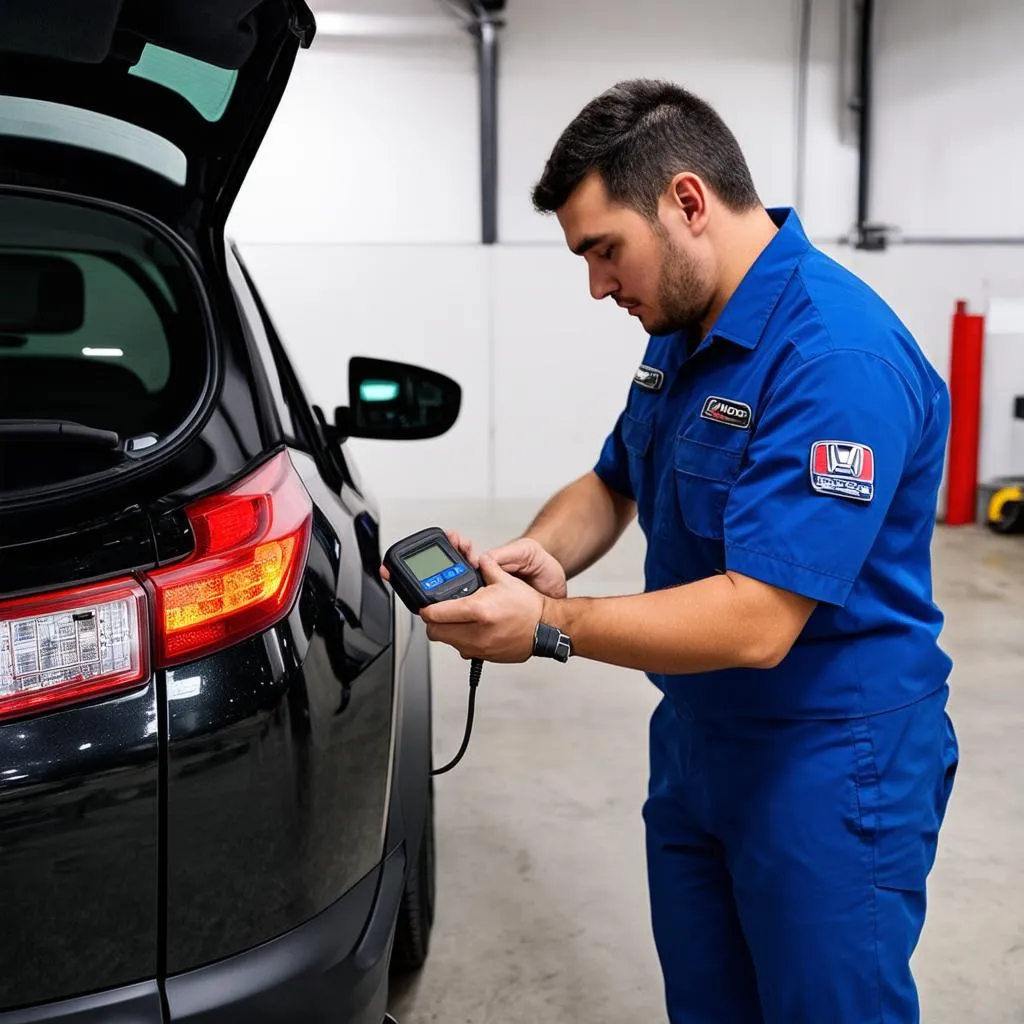Ever feel like you’re searching for a needle in a haystack? That’s what it can feel like trying to locate the OBD port on your 2014 Honda CRV, especially when you need it most. Imagine this: Your check engine light decides to throw a party on your dashboard right before a big road trip. You want to diagnose the problem quickly to avoid any unwanted surprises on the road. The OBD port is your gateway to understanding what’s going on under the hood, but first, you need to find it!
Understanding the Mystery of the OBD Port
Before we embark on our treasure hunt, let’s decipher what the OBD port is all about. OBD stands for On-Board Diagnostics, and the port is essentially a communication portal for your car’s computer system.
Think of it like this: Your car’s computer speaks a language only mechanics and diagnostic tools understand. The OBD port acts as a translator, allowing you (or your trusty mechanic) to communicate with your car and retrieve valuable diagnostic information. This information can help identify issues, read error codes, monitor performance, and much more.
Unveiling the Location: Your 2014 Honda CRV’s OBD Port
For most 2014 Honda CRVs, the OBD port is conveniently located under the dashboard on the driver’s side, typically near the steering column or the fuse box. It’s usually a black, trapezoidal port with 16 pins.
But wait, there’s more! While the location mentioned above is the most common, there might be slight variations depending on your specific CRV model.
Don’t worry, though! If you’re having trouble locating your OBD port, your owner’s manual is your best friend. It will usually have a diagram highlighting its exact location.
 2014 Honda CRV OBD Port
2014 Honda CRV OBD Port
Why is Finding Your OBD Port So Important?
You might be wondering, “Why all the fuss about this little port?” Well, accessing your OBD port opens a world of possibilities when it comes to understanding and maintaining your Honda CRV. Here are just a few benefits:
- Diagnose Engine Problems: The OBD port is the first point of contact for mechanics to retrieve diagnostic trouble codes (DTCs) that illuminate your check engine light.
- Assess Vehicle Performance: Want to know how your CRV is performing? OBD scanners can provide data on fuel economy, engine speed, emissions, and more.
- Reset Warning Lights: Once you’ve addressed a specific issue, the OBD port allows you to reset warning lights, ensuring your dashboard remains clear.
 Mechanic Using OBD Scanner on 2014 Honda CRV
Mechanic Using OBD Scanner on 2014 Honda CRV
Common Questions About the 2014 Honda CRV OBD Port
Can I use any OBD scanner on my 2014 CRV?
While most standard OBD-II scanners will work, it’s generally recommended to use a scanner specifically designed for Honda vehicles. These scanners can provide more detailed information and access model-specific data.
Is it difficult to use an OBD scanner?
Not at all! Modern OBD scanners are user-friendly, and many come with intuitive interfaces and easy-to-understand instructions.
Can I damage my car by using an OBD scanner?
As long as you’re using a compatible scanner and handling it correctly, using an OBD scanner is perfectly safe and won’t cause any harm to your car.
Need Help With Your Honda CRV’s Diagnostics?
We’re here to help! If you have any further questions about your 2014 Honda CRV’s OBD port, need assistance with diagnostics, or are looking for expert advice on Honda vehicle maintenance, our team of specialists is just a message away. Contact us on WhatsApp at +84767531508 for 24/7 support. We’re passionate about keeping your Honda running smoothly!
Keep Exploring:
- Learn more about OBD plug wiring diagrams
- Discover how to choose the right OBD scanner for your needs
- Explore other common maintenance tips for your 2014 Honda CRV